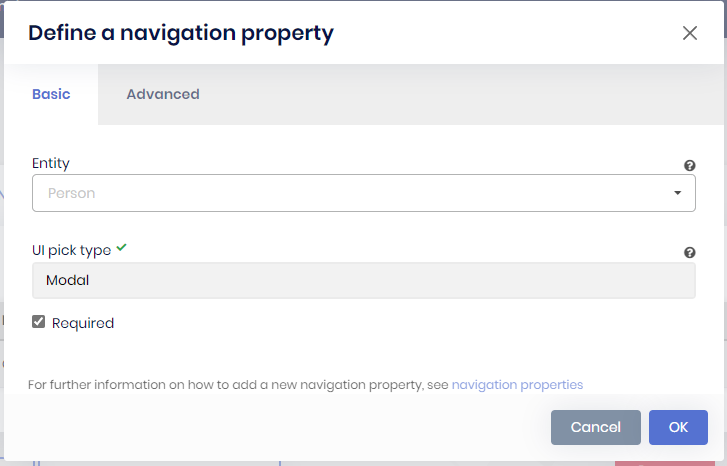

Thank you,
In other versions of abp exists an entity called AbpUser, in the new version this entity not exists. What is the right way to create a relation of my entity to user abp entity.
I'm usind EF.
Thank you,
ABP Framework version: v5.0.0-rc.1
UI type: Blazor WebAssembly
DB provider: EF Core
Tiered (MVC) or Identity Server Separated (Angular): no
Exception message and stack trace:
Blazor WebAssembly keeps loading and never show the interface.
API founds good and display swagger fast.
When stop application in Visual Studio display this message:
The program '[12524] iisexpress.exe' has exited with code 4294967295 (0xffffffff). The program '[18932] iisexpress.exe' has exited with code 4294967295 (0xffffffff). The program '' has exited with code 4294967295 (0xffffffff). The thread 0x0 has exited with code 0 (0x0). The program 'localhost:44307' has exited with code 4294967295 (0xffffffff). The program '' has exited with code 4294967295 (0xffffffff).
Steps to reproduce the issue:"
Create new blazor web assembly application with abp suite, select separate tenant and public web page with CMS.
Run application and not load.
Thank you,
System.InvalidOperationException: The entity type 'IdentityUserLogin' requires a primary key to be defined. If you intended to use a keyless entity type, call 'HasNoKey' in 'OnModelCreating'. For more information on keyless entity types, see https://go.microsoft.com/fwlink/?linkid=2141943.
at Microsoft.EntityFrameworkCore.Infrastructure.ModelValidator.ValidateNonNullPrimaryKeys(IModel model, IDiagnosticsLogger`1 logger)
at Microsoft.EntityFrameworkCore.Infrastructure.ModelValidator.Validate(IModel model, IDiagnosticsLogger`1 logger)
at Microsoft.EntityFrameworkCore.Infrastructure.RelationalModelValidator.Validate(IModel model, IDiagnosticsLogger`1 logger)
at Microsoft.EntityFrameworkCore.SqlServer.Internal.SqlServerModelValidator.Validate(IModel model, IDiagnosticsLogger`1 logger)
at Microsoft.EntityFrameworkCore.Metadata.Conventions.ValidatingConvention.ProcessModelFinalized(IModel model)
at Microsoft.EntityFrameworkCore.Metadata.Conventions.Internal.ConventionDispatcher.ImmediateConventionScope.OnModelFinalized(IModel model)
at Microsoft.EntityFrameworkCore.Metadata.Conventions.Internal.ConventionDispatcher.OnModelFinalized(IModel model)
at Microsoft.EntityFrameworkCore.Metadata.Internal.Model.FinalizeModel()
at Microsoft.EntityFrameworkCore.ModelBuilder.FinalizeModel()
at Microsoft.EntityFrameworkCore.Infrastructure.ModelSource.CreateModel(DbContext context, IConventionSetBuilder conventionSetBuilder, ModelDependencies modelDependencies)
at Microsoft.EntityFrameworkCore.Infrastructure.ModelSource.GetModel(DbContext context, IConventionSetBuilder conventionSetBuilder, ModelDependencies modelDependencies)
at Microsoft.EntityFrameworkCore.Internal.DbContextServices.CreateModel()
at Microsoft.EntityFrameworkCore.Internal.DbContextServices.get_Model()
at ResolveService(ILEmitResolverBuilderRuntimeContext , ServiceProviderEngineScope )
at ResolveService(ILEmitResolverBuilderRuntimeContext , ServiceProviderEngineScope )
at Microsoft.Extensions.DependencyInjection.ServiceProviderServiceExtensions.GetRequiredService(IServiceProvider provider, Type serviceType)
at Microsoft.Extensions.DependencyInjection.ServiceProviderServiceExtensions.GetRequiredService[T](IServiceProvider provider)
at Microsoft.EntityFrameworkCore.DbContext.get_DbContextDependencies()
at Microsoft.EntityFrameworkCore.DbContext.get_InternalServiceProvider()
at Microsoft.EntityFrameworkCore.DbContext.get_ChangeTracker()
at Volo.Abp.EntityFrameworkCore.AbpDbContext`1.Initialize(AbpEfCoreDbContextInitializationContext initializationContext)
at Volo.Abp.Uow.EntityFrameworkCore.UnitOfWorkDbContextProvider`1.CreateDbContextAsync(IUnitOfWork unitOfWork, String connectionStringName, String connectionString)
builder.Entity<Person>(b =>
{
b.ToTable(SharedDbProperties.DbTablePrefix + "People", SharedDbProperties.DbSchema);
b.ConfigureByConvention();
b.Property(x => x.TenantId).HasColumnName(nameof(Person.TenantId));
b.Property(x => x.Name).HasColumnName(nameof(Person.Name)).IsRequired().HasMaxLength(PersonConsts.NameMaxLength);
b.HasOne<Volo.Abp.Identity.IdentityUser>().WithMany().HasForeignKey(x => x.AbpUserId);
In my database founds good create the relation, but when I get data from any table, I got the issue message explained above. I can't use AppUser of the main application because this is a Blazor module and doesn't exist AppUser in the module only in the main application.
ABP Framework version: v4.3.0
UI type: Blazor
DB provider: EF Core
Tiered (MVC) or Identity Server Separated (Angular): no
Steps to reproduce the issue:
When I try to generate the code with abp suite in a module don't create the user interface for blazor inside the module.
Thank you,
Hello, I need a guide to develop an blazor ui application module, and how I can add this module to my existing monolithic blazor application. I need also know how I can do relations between my principal monolithic application entities to my blazor ui module in other solution. I already read the documents of modules, and plugins but I need more details, and if you have an getting started of this was great.
Thank you,
Johan

